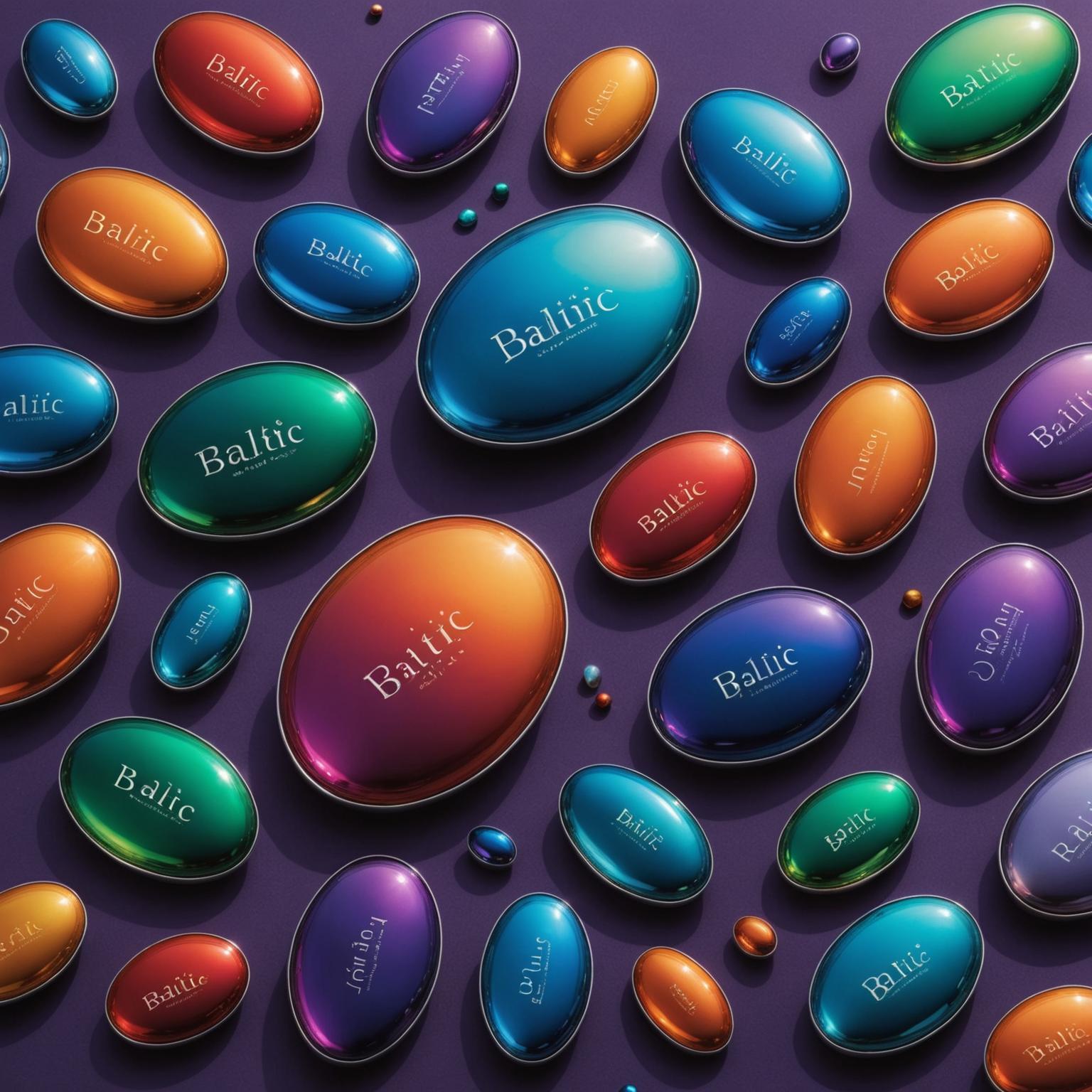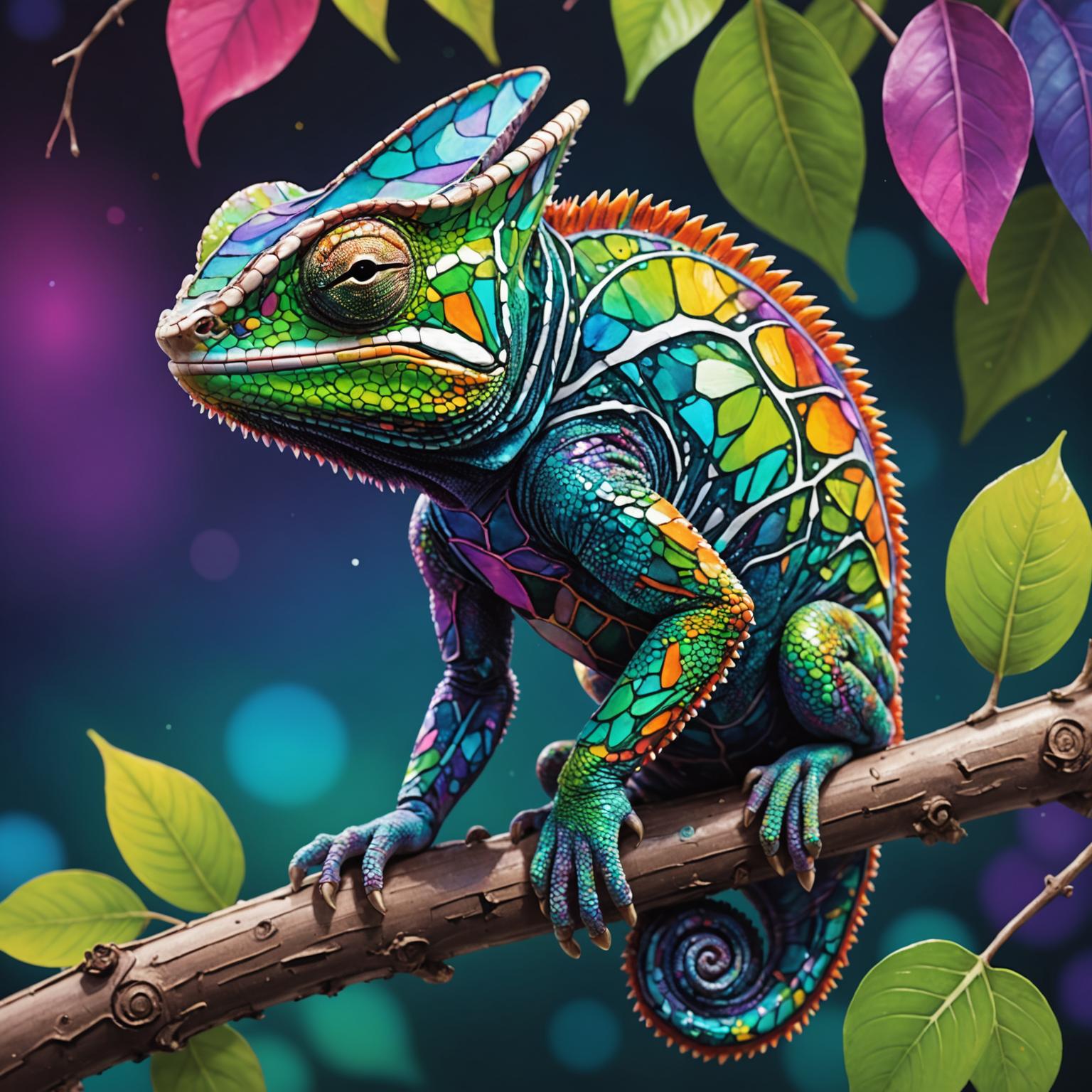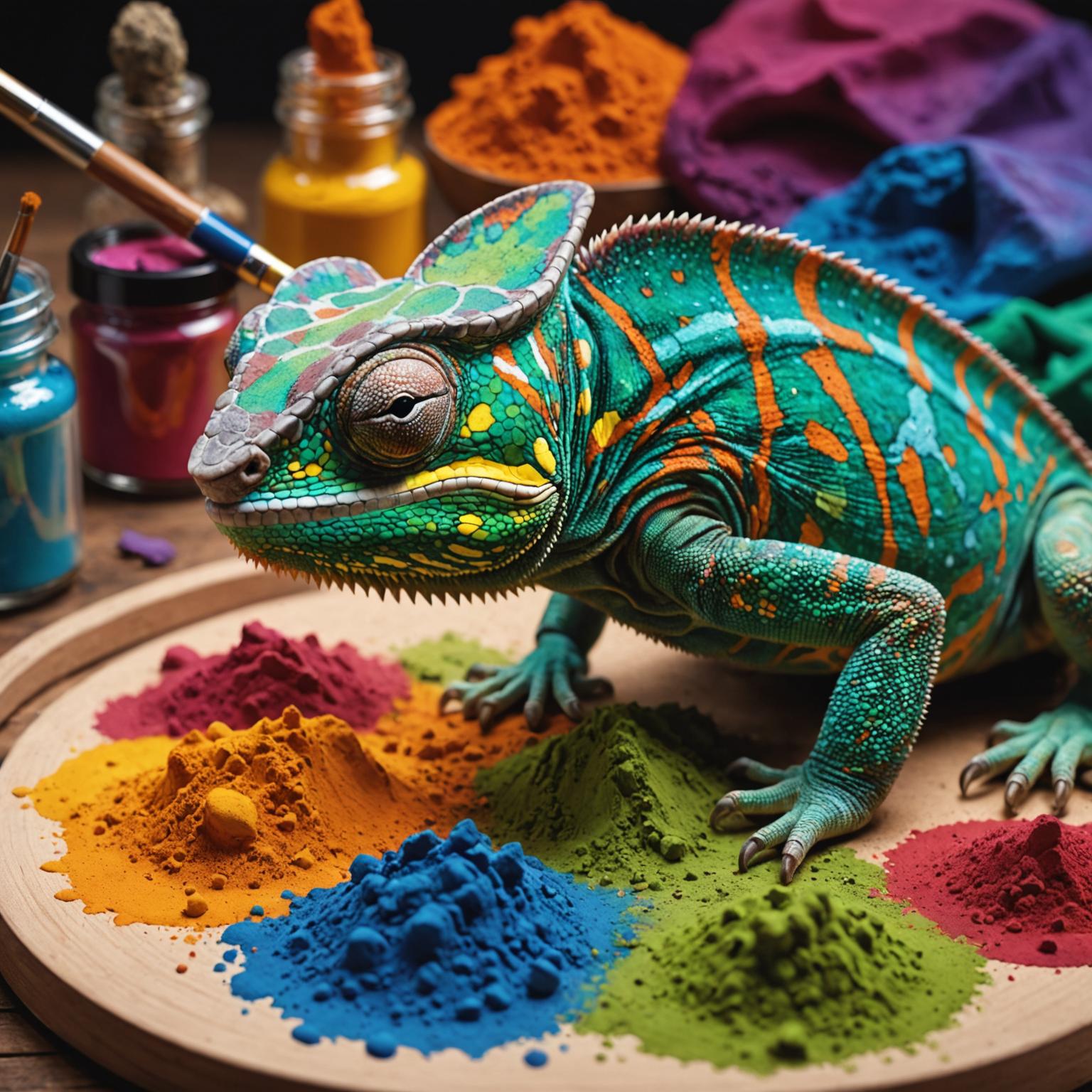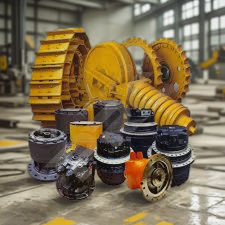The Fascinating World of Chameleon Pigments
Chameleon pigments, also known as goniochromatic pigments, represent a remarkable advancement in materials science, offering a dynamic visual experience unlike traditional static colors. These innovative materials possess the extraordinary ability to change color depending on the angle of view or the angle of illumination. This captivating effect, often described as a shimmer or metallic sheen, is not due to traditional dyes or pigments that absorb specific wavelengths of light, but rather to sophisticated optical mechanisms like thin-film interference and the precise structuring of microscopic flakes. The allure of these pigments lies in their transformative quality, turning ordinary surfaces into vibrant, shifting displays of color and light, offering a new palette for artists and designers who aim to push the boundaries of visual expression.
The Science Behind the Shifting Spectacle
At the heart of the color-shifting capabilities of these pigments is a phenomenon known as thin-film interference, similar to what causes the iridescent colors seen in soap bubbles or oil slicks on water. Chameleon pigments are typically composed of microscopic, multi-layered flakes. These flakes often consist of a core material, such as aluminum or glass (silica), coated with several layers of other materials like metal oxides (e.g., titanium dioxide, iron oxide) or other dielectric substances. The thickness of these layers is meticulously controlled, often in the nanometer range. When light strikes these multi-layered flakes, it is reflected from both the top and bottom surfaces of each layer. Depending on the viewing angle and the thickness of the layers, different wavelengths of light interfere constructively or destructively, resulting in the perception of different colors. This is why they are often referred to as color-shifting pigments. The size and orientation of these flakes also play a crucial role in the perceived effect, contributing to the luster and color travel.
A Kaleidoscope of Hues: Cool Chameleon Colors and Iridescent Brilliance
One of the most captivating aspects of chameleon pigments is the incredible range of cool chameleon colors and iridescent effects they can produce. The transitions can span across the entire visible spectrum, creating truly unique and mesmerizing visual experiences. For instance, a pigment might shift from a deep emerald green to a vibrant sapphire blue and then to a rich amethyst purple as the viewing angle changes. Other combinations include transitions from gold to green, blue to red, or even through multiple hues in a single pigment. These iridescent pigments are engineered to create dramatic color flops. Innovations in this field, such as the “Pure Soul” collection described by Baltic Day, highlight the aesthetic potential, where hues boast 'mesmerizing multidimensional shades that transform under varying angles and light sources.' This collection notes shifts from 'emerald greens that shimmer into rich gold, to dreamlike blues that transition into magentas, and fiery reds fused with touches of ultraviolet brilliance,' illustrating the breathtaking possibilities these advanced materials offer to creators.
Automotive Artistry: Transforming Vehicles with Dynamic Color
Perhaps one ofthe most well-known and visually impactful applications of chameleon pigments is in the automotive industry. High-end custom paint jobs utilizing these pigments can transform a car from a mere mode of transportation into a rolling piece of art. The color shifts are particularly dramatic on the curved surfaces of a vehicle, where the interplay of light and shadow accentuates the dynamic hues. Applying these pigments requires specialized techniques to ensure the microscopic flakes align correctly for the optimal effect. The durability of these finishes is also a key consideration, with manufacturers developing robust formulations that can withstand environmental factors like UV radiation and temperature fluctuations. The use of chameleon pigments in automotive coatings signifies a move towards more personalized and expressive vehicle aesthetics.
Cosmetics and Fashion: Adorning with Shifting Shades
Beyond automotive applications, color-shifting pigments have found a significant niche in the cosmetics and fashion industries. Nail polishes, eyeshadows, lipsticks, and other beauty products often incorporate these pigments to provide a duochrome or multichrome effect that traditional colorants cannot achieve. The result is a dynamic look that changes with movement and lighting, adding an element of surprise and sophistication. In fashion, these pigments can be incorporated into textiles, accessories, and even wearable technology, creating garments that appear to morph in color as the wearer moves. This application allows designers to create truly unique and eye-catching pieces that capture attention and express individuality, pushing the boundaries of material innovation in adornment.
Art, Design, and High-Impact Printing
The versatility of chameleon pigments extends deeply into the realms of art, industrial design, and high-security printing. Artists utilize them to create captivating works where the viewer's perspective actively influences the perceived colors, adding an interactive dimension to the artwork. In product design, these pigments can be applied to a wide array of items, from consumer electronics to sporting goods, imbuing them with a futuristic and premium feel. The unique optical properties of iridescent pigments also make them valuable for security applications, such as in banknotes and official documents, where the non-replicable color shift serves as an anti-counterfeiting measure. The ability to create such distinct visual signatures is invaluable where authenticity is paramount.
Enhancing Visual Experiences: Pigments, Photography, and Expression
In a world increasingly focused on visual storytelling and unique aesthetic experiences, materials like chameleon pigments offer exciting possibilities. For instance, imagine event backdrops or art installations that transform under different lighting conditions or as people move around them. These dynamic surfaces can create stunning photographic opportunities, perfectly aligning with the desire for novel and shareable content. While a company like DOLA FOTO focuses on capturing moments of self-expression through innovative photo booth technology, the broader visual landscape is constantly being enriched by such material advancements. The dynamic and ever-changing nature of these pigments resonates with the fluid and multifaceted ways individuals choose to express themselves today, offering a visual metaphor for transformation and individuality. Creating unique settings or props with such materials can significantly elevate the aesthetic of captured memories, providing a feast for the eyes and the camera lens alike.
The Future of Chromatic Innovation
The development of chameleon pigments and other optically variable materials is an ongoing process. Researchers are continually exploring new material combinations, more sophisticated nanostructures, and improved manufacturing techniques to achieve even more dramatic color shifts, enhanced durability, and greater cost-effectiveness. Future innovations might include pigments with programmable color changes, responsive to stimuli beyond viewing angle, such as temperature or electrical fields. These advancements promise to further expand the application possibilities, integrating dynamic color into architecture, interactive displays, and even advanced sensor technologies. The journey of these cool chameleon colors is far from over, with scientists and designers constantly pushing the envelope of what is visually achievable.
Conclusion: A Palette of Infinite Possibilities
Chameleon pigments are more than just a novelty; they represent a sophisticated fusion of science and art. Their ability to display multiple colors depending on the angle of observation has revolutionized industries ranging from automotive to cosmetics and continues to inspire new avenues for creative expression. These color-shifting pigments provide designers, artists, and engineers with a unique tool to create products and experiences that are visually engaging, dynamic, and deeply personal. As technology evolves, we can anticipate even more breathtaking applications of these iridescent pigments, further blurring the lines between static objects and living art, and empowering a future where our visual world is as vibrant and transformative as our imaginations.






